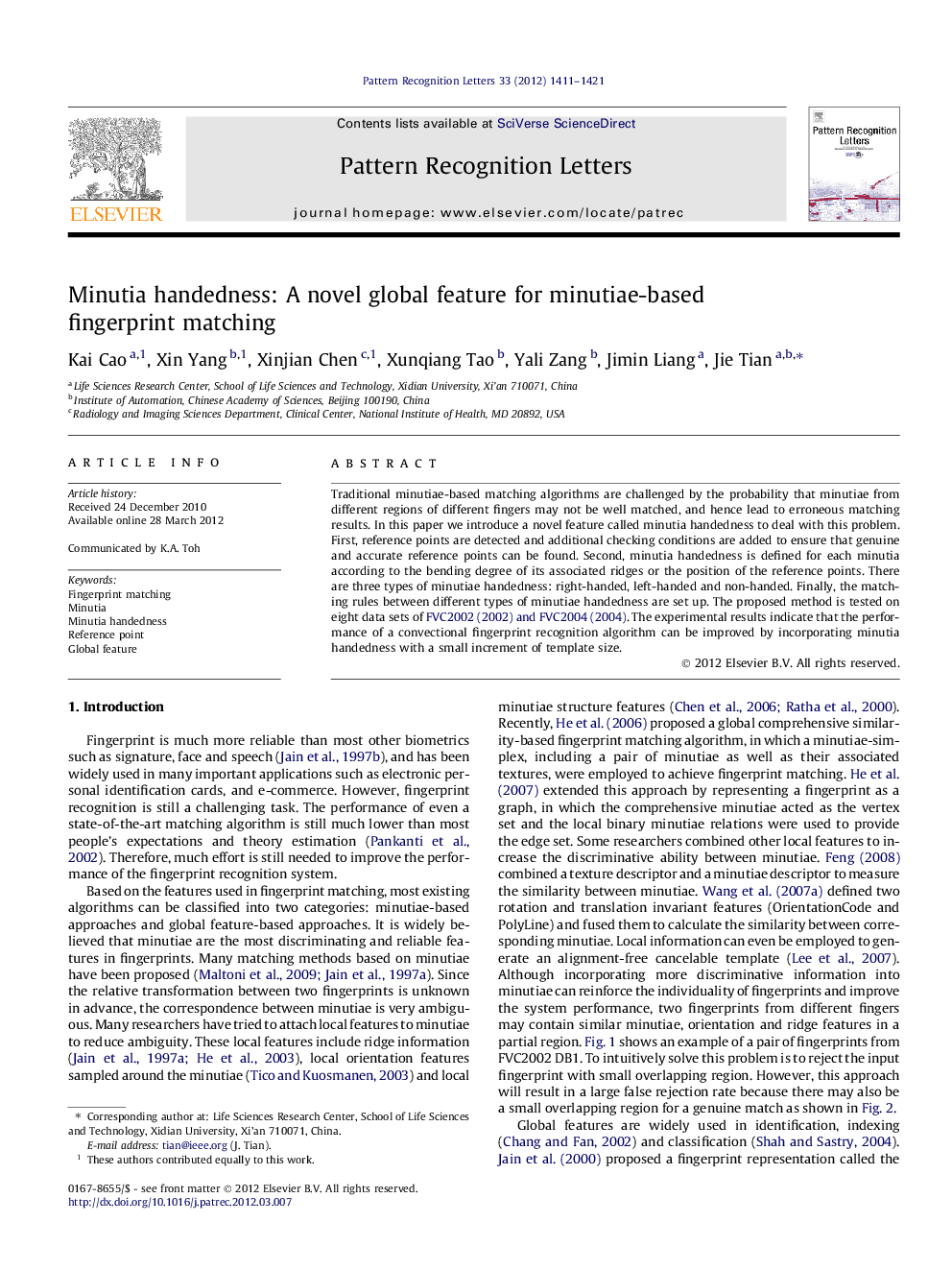| Article ID | Journal | Published Year | Pages | File Type |
|---|---|---|---|---|
| 536487 | Pattern Recognition Letters | 2012 | 11 Pages |
Traditional minutiae-based matching algorithms are challenged by the probability that minutiae from different regions of different fingers may not be well matched, and hence lead to erroneous matching results. In this paper we introduce a novel feature called minutia handedness to deal with this problem. First, reference points are detected and additional checking conditions are added to ensure that genuine and accurate reference points can be found. Second, minutia handedness is defined for each minutia according to the bending degree of its associated ridges or the position of the reference points. There are three types of minutiae handedness: right-handed, left-handed and non-handed. Finally, the matching rules between different types of minutiae handedness are set up. The proposed method is tested on eight data sets of FVC2002, 2002 and FVC2004, 2004. The experimental results indicate that the performance of a convectional fingerprint recognition algorithm can be improved by incorporating minutia handedness with a small increment of template size.
► A novel global feature called minutia handedness is proposed. ► Matching rules between different types of minutiae handedness are set up. ► Minutia handedness improves fingerprint matching with a small increment of template size.
